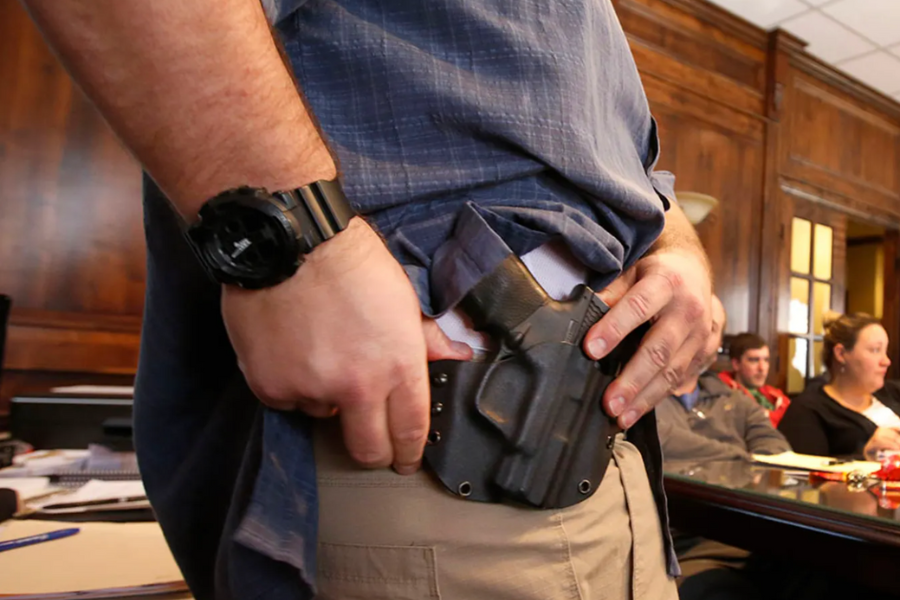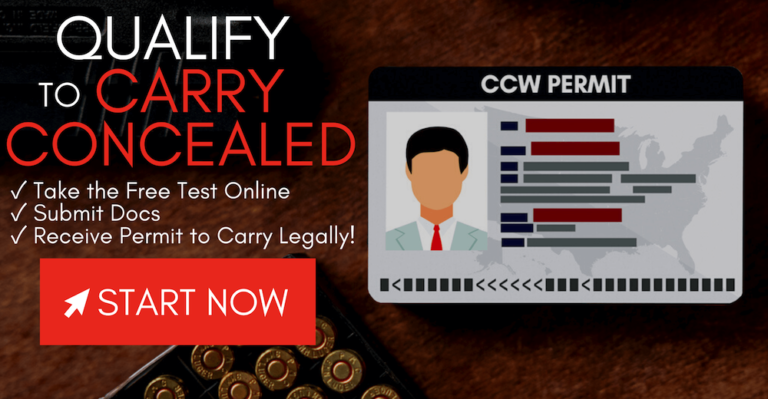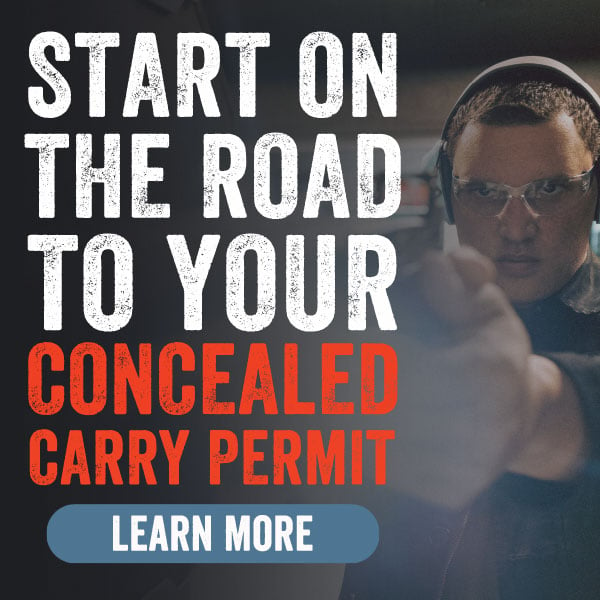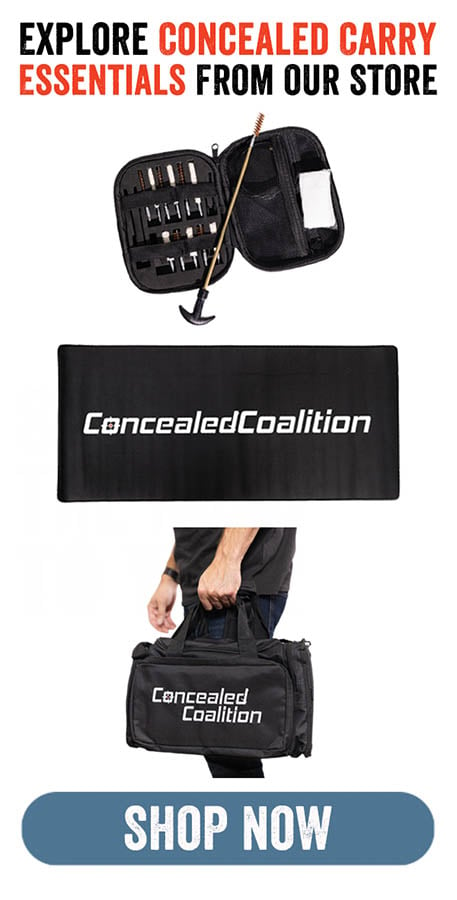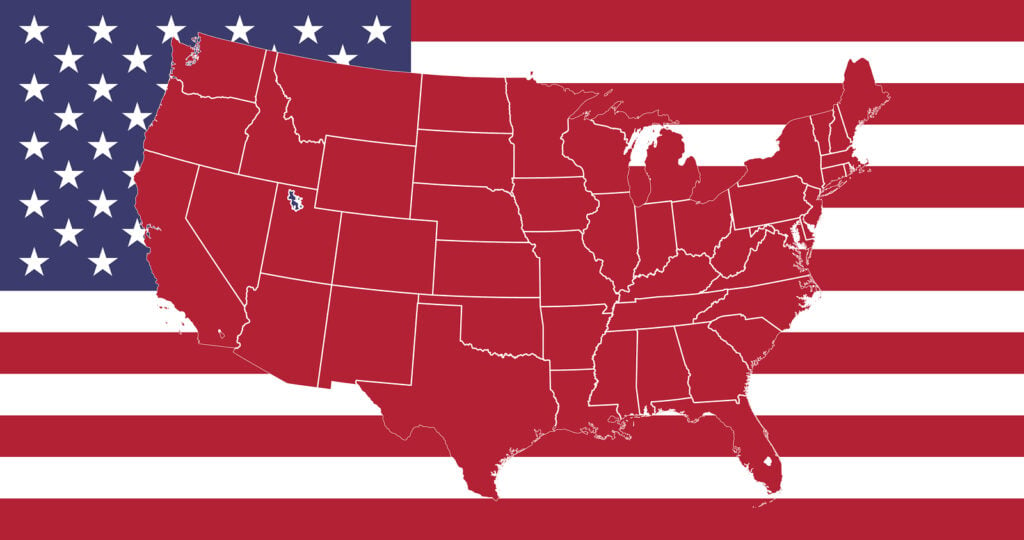Carrying a firearm is about more than just choosing the right gun—it’s also about how and where you carry it. The position you choose impacts concealment, comfort, accessibility, and safety.
In this guide, Concealed Coalition walks you through the a comparison of concealed carry positions, weighing their pros, cons, and best uses of common positions to help you make an informed choice.
Quick Comparison of Concealed Carry Positions
| Position | Description | Pros | Cons | Best For |
| Inside the Waistband (IWB) | Holstered inside pants at 3–5 o’clock (hip) or appendix (12 o’clock) | Highly concealable, easy access, versatile | Can be uncomfortable sitting, requires a good belt/holster | Everyday carry under shirts or jackets |
| Outside the Waistband (OWB) | Holstered outside pants on the hip | Comfortable, fast draw | Less concealable under light clothing | Range use, winter carry, open carry-friendly states |
| Appendix Carry (AIWB) | In front of waistband, near appendix | Very concealable, fast access | Can be uncomfortable, risks pointing at body | Slim body types, everyday deep concealment |
| Small of Back (SOB) | Holstered at 6 o’clock | Conceals well under jackets | Harder to draw, risk of injury if falling | Occasional or backup carry |
| Shoulder Holster | Underarm holster with harness | Comfortable sitting, good for larger guns | Slower draw, requires cover garment | Cold climates, vehicle carry |
| Ankle Carry | Holstered at ankle inside pants | Highly concealable, backup option | Hard to access quickly, limited to small guns | Law enforcement backup, discreet carry |
| Pocket Carry | Firearm in holster inside pocket | Extremely discreet, easy access in some positions | Limited to small handguns, risk of printing | Backup gun or casual carry |
| Off-Body Carry | Purse, bag, or briefcase | Can carry larger guns, convenient | Slower access, higher theft risk | Situations where on-body carry isn’t practical |
Inside the Waistband (IWB)
IWB carry places your firearm inside your waistband, typically at the 3–5 o’clock (strong side) or appendix (12 o’clock) position.
- Advantages: Excellent concealment under most clothing, quick and efficient draw, adaptable to various body types.
- Disadvantages: Can be uncomfortable, especially while sitting. Requires a secure holster and a sturdy gun belt.
- Ideal For: Everyday carry (EDC) for those prioritizing concealment and accessibility.
Outside the Waistband (OWB)
OWB carry places the firearm outside your waistband, secured to your belt.
- Advantages: More comfortable since the firearm doesn’t press against your body. Allows for a quick, natural draw.
- Disadvantages: Less discreet and prone to “printing” unless covered by outerwear.
- Ideal For: Range training, colder weather with heavier clothing, or open carry scenarios.
Appendix Carry (AIWB)
AIWB positions the firearm in front of the body, usually between the 12 and 2 o’clock positions.
- Advantages: Excellent concealment due to body curvature and clothing drape. Provides fast, easy access.
- Disadvantages: Can be uncomfortable when sitting and poses safety concerns during holstering.
- Ideal For: Those with slim builds who prioritize concealment and quick access.
Small of Back (SOB)
SOB carry positions the firearm at the 6 o’clock position on your back.
- Advantages: Offers decent concealment under jackets, especially from the front.
- Disadvantages: Slow and awkward draw, uncomfortable when sitting, and risk of spinal injury if falling.
- Ideal For: Rarely recommended; may work as a backup in specific situations.
Shoulder Holster
This method secures the firearm under the arm with a harness.
- Advantages: Comfortable for extended periods of sitting and suitable for larger firearms.
- Disadvantages: Slower draw due to the sweeping motion required and always needs a covering garment.
- Ideal For: Colder climates with regular jacket use or for seated activities like driving.
Ankle Carry
Ankle carry secures a small firearm just above the ankle, hidden inside the pant leg.
- Advantages: Highly discreet and deeply concealed, popular as a backup for law enforcement.
- Disadvantages: Slow access, requires bending or kneeling, and limited to small, lightweight firearms.
- Ideal For: Secondary firearm use or situations requiring extreme discretion.
Pocket Carry
Pocket carry involves placing a small firearm in a holster inside your pants or jacket pocket.
- Advantages: Simple and discreet, eliminating the need for an external holster.
- Disadvantages: Limited to small firearms, risk of “printing,” and requires a pocket holster to protect the trigger.
- Ideal For: Backup firearm in casual settings with lightweight clothing.
Off-Body Carry
Off-body carry uses bags, purses, or backpacks with a dedicated firearm compartment.
- Advantages: Convenient for carrying larger firearms or when on-body carry isn’t feasible.
- Disadvantages: Slower access, higher theft risk, and less control over the firearm.
- Ideal For: Situations where on-body carry isn’t practical, provided proper precautions are taken.
Thoughts After Going Through a Comparison of Concealed Carry Positions
Choosing the right concealed carry position depends on your lifestyle, body type, and environment. For many, experimenting with multiple positions helps determine the best balance of comfort, concealment, and readiness.
At Concealed Coalition, we provide concealed carry training nationwide to help you build safe, effective carrying habits. From understanding holster types to mastering situational awareness, our courses prepare you for responsible self-defense.
